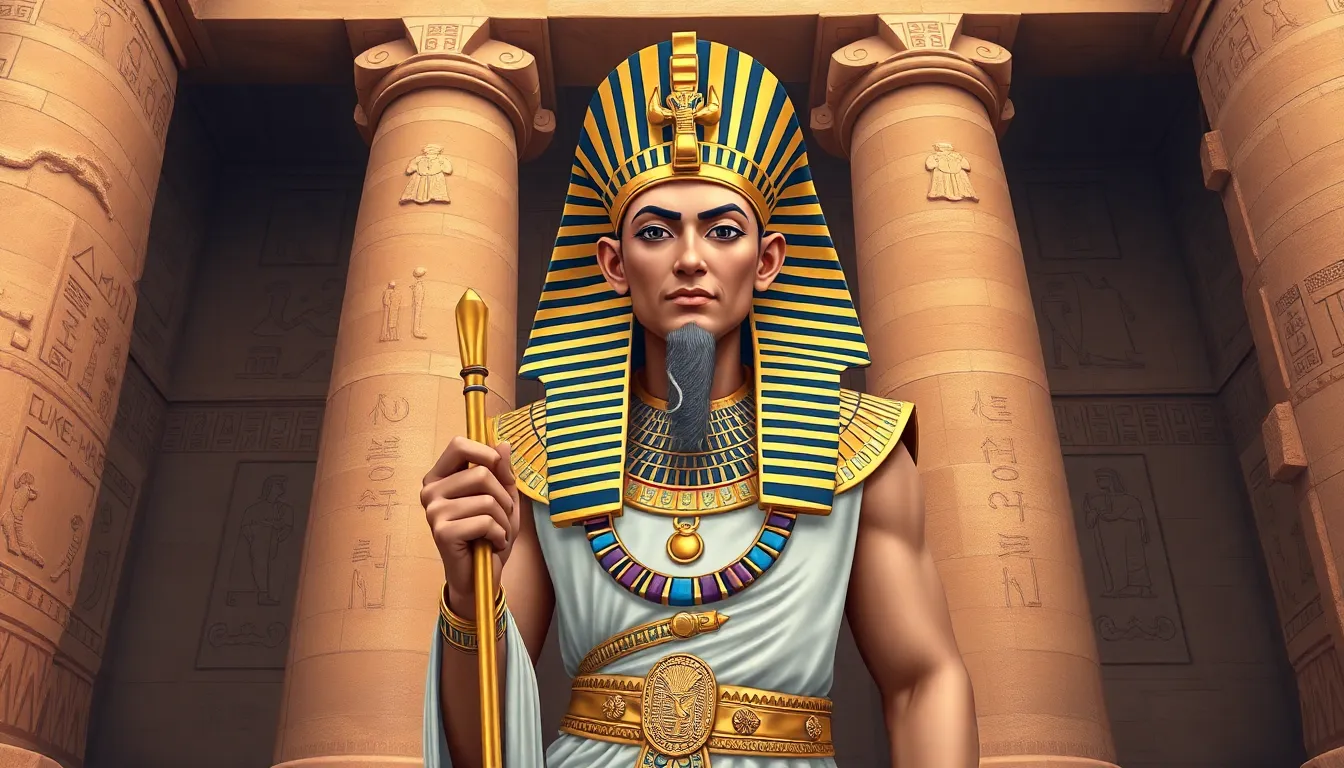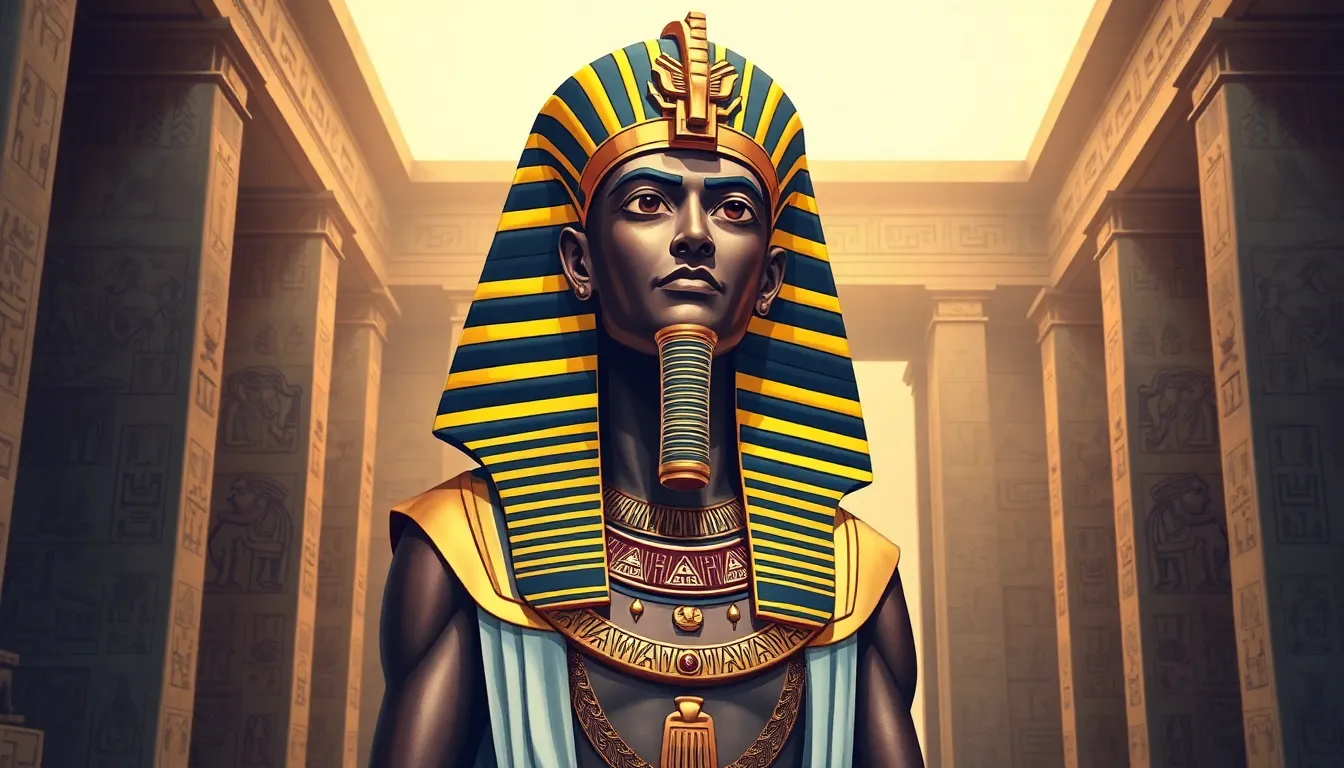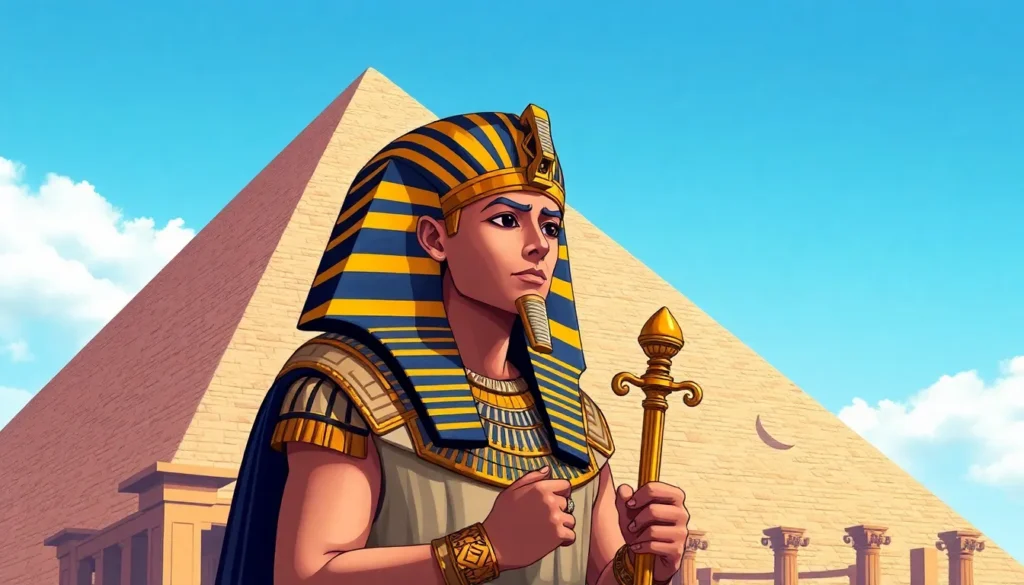Step into the sun-soaked sands of ancient Egypt, where politics was as intricate as the hieroglyphs on the walls. Imagine a world where pharaohs ruled like rock stars, complete with their own fan clubs—only instead of screaming fans, they had loyal subjects and a few disgruntled nobles plotting behind the scenes. The political landscape was a wild mix of divine authority, cunning diplomacy, and the occasional pyramid scheme—literally!
Politics of Ancient Egypt
Politics in ancient Egypt revolved around the pharaoh, seen as both a divine ruler and a political leader. Pharaohs wielded substantial power, blending religious authority with governance. Nobles, often discontented with pharaonic rule, engaged in intrigues that impacted political stability. Royal decrees from the pharaoh directed various aspects of life, impacting trade, agriculture, and law. A complex bureaucracy supported the pharaoh’s authority. Officials, such as viziers, managed large administrative tasks, ensuring effective governance. In aiding the pharaoh, these administrators often held significant regional power, which could threaten the central authority if unchecked. Diplomacy played a crucial role in ancient Egyptian politics. Treaties with neighboring kingdoms established borders and secured trade routes. Warfare, while common, also necessitated alliances, with marriages between royal families solidifying these relationships. The social hierarchy structured political dynamics. At the top, pharaohs and high-ranking officials commanded respect and resources. Middle-class scribes and craftsmen supported the economy and administration. Below them, farmers, laborers, and slaves worked the land, with limited political influence. This pyramid-shaped structure mirrored the physical pyramids, with each level playing a distinct role in society. The politics of ancient Egypt experienced fluctuations in power due to various factors, including invasions and economic crises. Famine and discontent among the populace often sparked uprisings, challenging the pharaoh’s rule. These events shaped governance styles and led to periods of reform. The historical narrative reflects a blend of stability and turmoil that characterized ancient Egypt’s political landscape.Key Figures in Ancient Egyptian Politics

Pharaohs and Their Role
Pharaohs served as divine rulers, embodying both political authority and religious significance. They dictated laws, protected the kingdom, and oversaw monumental projects such as temples and pyramids. Trusted as intermediaries between the gods and the people, pharaohs commanded a loyal following. Ruling dynasties included notable figures like Ramses II and Tutankhamun, who left lasting impacts on Egyptian culture and identity. Each pharaoh maintained vast resources, facilitating economic sustainability and military strength. Strategic marriages often strengthened alliances, ensuring political stability during their reigns. Despite being seen as all-powerful, pharaohs faced challenges from discontented nobles and fluctuating external threats.Advisors and Officials
Advisors and officials played critical roles in supporting pharaonic rule. The vizier functioned as the primary assistant, overseeing administrative tasks and government affairs. Supporting officials managed specific domains, such as finance, agriculture, and justice. This bureaucratic system ensured efficient governance across the vast territories of ancient Egypt. Local governors held regional authority, which sometimes led to power struggles with the pharaoh. Scribes documented transactions and maintained records, cementing their importance in administration. Loyalty among these officials was essential to maintaining order, as political intrigue and ambitious nobles could disrupt the established hierarchy. Each position contributed to a complex network, facilitating both governance and control.Political Structure and Governance
Ancient Egypt’s political structure combined divine authority with intricate governance mechanisms. The pharaoh stood at the apex, embodying both a religious figure and a political leader, commanding immense power.Theocracy and Divine Kingship
Divine kingship defined the political landscape. The pharaoh, viewed as a living god, wielded authority over all aspects of life. Under this theocratic system, citizens worshipped the ruler, believing their well-being relied on the pharaoh’s favor from the gods. This belief fostered loyalty and compliance, reinforcing the pharaoh’s unchallengeable status. In times of crises, the pharaoh’s divine connection played a crucial role in maintaining order, as rituals and decrees sought to appease deities and secure stability.Bureaucracy and Administrative Functions
A well-organized bureaucracy supported pharaonic rule. Officials, including viziers and regional governors, managed various administrative tasks, ensuring the smooth operation of the state. Each official held authority over specific sectors, such as agriculture, taxation, and public works, maintaining order and providing essential services to citizens. This structured administration minimized chaos while enabling effective governance. Loyalty from bureaucratic officers was vital to navigate political challenges and reduce the risk of uprisings. Together, these administrative functions created a stable framework, allowing the pharaoh to focus on broader governance and divine responsibilities.Major Political Events and Periods
Ancient Egypt’s political history spans several significant periods, each with distinctive characteristics and events that shaped governance and society.The Old Kingdom
The Old Kingdom, lasting from approximately 2686 to 2181 BCE, marked the height of pyramid construction and central authority. Pharaohs established strong bureaucracies, enabling efficient administration and resource allocation. This era saw the unification of Upper and Lower Egypt, symbolizing political stability. Kings such as Djoser and Sneferu initiated grand building projects that displayed their divine status and cemented power. Conflicts with local nobility occasionally disrupted governance, yet the overall structure remained solid. The Old Kingdom ended due to declining resources and power struggles, leading to the successful decentralization of authority.The Middle Kingdom
The Middle Kingdom, spanning from about 2055 to 1650 BCE, represented a renaissance in art, literature, and centralized governance. Pharaohs like Mentuhotep II reunited Egypt, restoring stability after the chaos of the First Intermediate Period. Administrative reforms enhanced agricultural productivity and trade, expanding wealth across the kingdom. This period’s leadership emphasized social justice, with an emphasis on laws that prioritized common people’s rights. External threats, however, emerged from neighboring regions, necessitating military campaigns and diplomatic strategies. The decline of the Middle Kingdom paralleled invasions from the Hyksos, leading to further transformations in governance.The New Kingdom
The New Kingdom, lasting from roughly 1550 to 1070 BCE, witnessed Egypt’s peak as a military power and cultural hub. Pharaohs such as Hatshepsut and Ramses II expanded the empire through conquests and strategic alliances. Diplomacy flourished, often incorporating marriages to secure political ties. This era promoted monumental architecture, like the temples at Karnak and Luxor, signifying divine favor. Internal conflicts emerged from succession disputes, leading to prominent figures like Akhenaten, who attempted radical religious reforms. The New Kingdom eventually declined due to a combination of external pressures and internal strife, reshaping the political landscape in its aftermath.Influence on Modern Governance
Ancient Egypt’s political system significantly influences contemporary governance structures. Elements such as bureaucracy and centralized authority find parallels in modern states. The pharaoh’s role as a divine leader set a precedent for the integration of religious and political power, evident in some current political frameworks. Bureaucracies established during ancient times remain crucial in modern governance. Officials like viziers ensured efficient administration, comparable to today’s governmental departments. The clear chain of command fostered organized management, highlighting the importance of accountability and structure. Diplomatic strategies employed by ancient Egyptians also resonate today. Treaties, alliances, and procedures for conflict resolution underscore the necessity of international relations in contemporary politics. Royal marriages, used to solidify alliances, echo today’s diplomatic strategies aimed at fostering cooperation. The social hierarchy in ancient Egypt informs the understanding of class relations today. Political dynamics often reflect existing power structures, seen through the lens of the ancient elite along with contemporary political and economic disparities. Examples of public dissatisfaction leading to uprisings during ancient times illustrate how citizens respond to discontent, resonating with modern movements advocating for change. Periods of reform in ancient Egypt mirror cycles in modern governance. Leaders frequently adapt their approaches in response to economic crises or social movements, demonstrating ongoing negotiation of power. Key historical figures, such as Ramses II, embody the enduring legacy of strong leadership styles sought in current political spheres.
Overall, the essence of ancient Egyptian governance manifests in today’s political systems. Governance models that emphasize structure, diplomacy, and responsiveness to public sentiment reflect the enduring impact of ancient paradigms on modern political landscapes.
Periods of reform in ancient Egypt mirror cycles in modern governance. Leaders frequently adapt their approaches in response to economic crises or social movements, demonstrating ongoing negotiation of power. Key historical figures, such as Ramses II, embody the enduring legacy of strong leadership styles sought in current political spheres.
Overall, the essence of ancient Egyptian governance manifests in today’s political systems. Governance models that emphasize structure, diplomacy, and responsiveness to public sentiment reflect the enduring impact of ancient paradigms on modern political landscapes.



